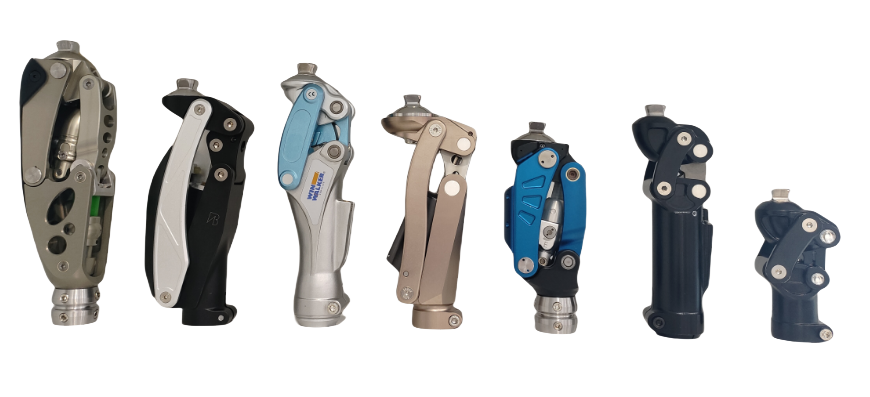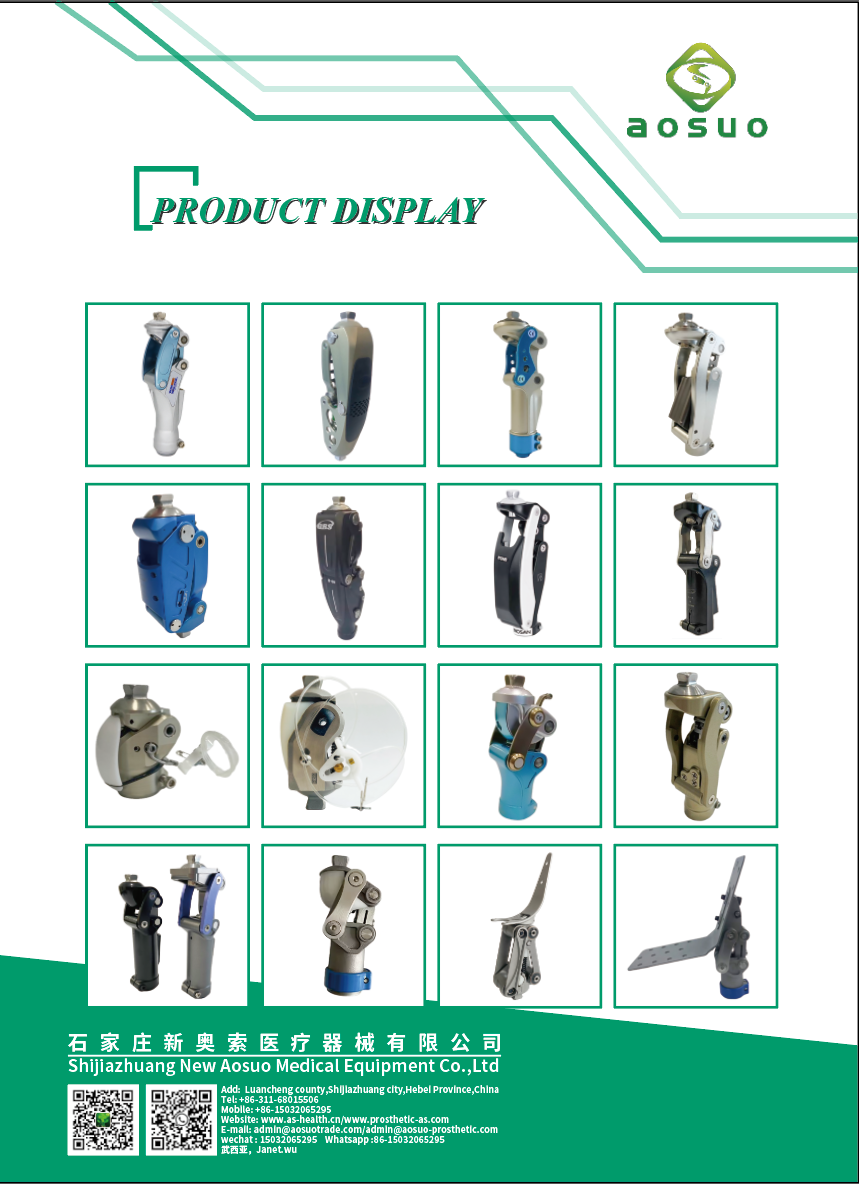Key Innovations in Artificial Ankle Joint Design Over the Years
Release Time:
Oct 26,2025
Key Innovations in Artificial Ankle Joint Design Over the Years The field of orthopedic medicine has seen remarkable advancements, particularly in the design and functionality of artificial ankle joints. Over the years, innovations in technology and materials have transformed how surgeons approach ankle replacements, leading to better outcomes for patients. This article delves into the critical de
Key Innovations in Artificial Ankle Joint Design Over the Years
The field of orthopedic medicine has seen remarkable advancements, particularly in the design and functionality of artificial ankle joints. Over the years, innovations in technology and materials have transformed how surgeons approach ankle replacements, leading to better outcomes for patients. This article delves into the critical developments in artificial ankle joint design, exploring the unique features and benefits that each innovation brings to the table.
The Evolution of Ankle Joint Replacement
The journey of artificial ankle joint design began in the mid-20th century, primarily driven by the need to alleviate pain and restore mobility for patients suffering from severe ankle joint conditions such as arthritis and trauma. The evolution can be categorized into several phases:
Early Designs: The Beginning of Ankle Replacement
In the 1970s, the first-generation ankle replacements were introduced, primarily made from metal and plastic. These early implants aimed to mimic the natural movement of the ankle but lacked the durability and functionality needed for long-term use. As a result, many patients experienced complications and implant failures.
Advancements in Biomechanics
The late 1980s and 1990s marked significant advancements in biomechanics, leading to the development of more sophisticated designs. Surgeons began to focus on replicating the natural movement of the ankle joint, allowing for a more functional range of motion. This period saw the introduction of modular implant designs that allowed for greater customization to fit patient-specific anatomy.
The Introduction of Mobile Bearing Technology
In the early 2000s, mobile bearing technology emerged as a groundbreaking innovation. This design featured a mobile polyethylene bearing surface that allowed for more natural motion during activities such as walking and running. With reduced wear and tear, mobile bearing joints significantly increased the longevity of the implant, leading to improved patient satisfaction.
Modern Innovations in Artificial Ankle Joint Design
Today, the landscape of artificial ankle joint design continues to evolve with cutting-edge technologies and materials. Surgeons and engineers collaborate to create implants that offer enhanced performance, durability, and patient outcomes.
3D Printing and Customization
One of the most significant innovations in recent years is the use of **3D printing** technology. This advancement allows for the creation of patient-specific implants, tailored to individual anatomy. Surgeons can utilize advanced imaging techniques to design and manufacture ankle joints that fit perfectly, reducing the risk of complications and improving overall functionality.
Benefits of 3D Printing in Ankle Joint Design
- **Precision Fit:** Custom implants reduce the risk of misalignment and improve stability during mobility.
- **Reduced Surgical Time:** Surgeons can prepare and plan surgeries more efficiently with customized implants.
- **Improved Recovery Times:** A perfect fit translates to fewer complications, leading to faster rehabilitative recovery.
Smart Materials and Coatings
The integration of **smart materials** into artificial ankle joint design has opened new avenues for enhancing performance. These materials can respond to changes in their environment, allowing for better adaptability and longevity.
Key Features of Smart Materials
- **Wear Resistance:** Advanced coatings can significantly reduce wear and tear, prolonging the lifespan of the implant.
- **Biocompatibility:** New materials are being developed that ensure better integration with the body, reducing the risk of rejection.
Robotic-Assisted Surgery
The introduction of **robotic-assisted surgery** has revolutionized how ankle replacements are performed. This technology allows for greater precision during the surgical procedure, leading to improved outcomes and reduced recovery times.
Advantages of Robotic-Assisted Surgery
- **Enhanced Precision:** Robots can perform intricate tasks with extreme accuracy, leading to better alignment of the implant.
- **Less Invasive Techniques:** Robotic systems often enable minimally invasive surgeries, promoting quicker recovery.
Patient-Centric Innovations in Ankle Joint Design
As the orthopedic field continues to prioritize **patient-centered care**, innovations in artificial ankle joint design have increasingly focused on enhancing the patient experience.
Improved Post-operative Recovery Protocols
Modern designs are accompanied by streamlined recovery protocols that emphasize mobility and rehabilitation. These protocols not only help in faster recovery but also enhance the overall functionality of the implant.
Key Elements of Modern Recovery Protocols
- **Early Mobilization:** Patients are encouraged to start moving the joint shortly after surgery, improving blood circulation and reducing stiffness.
- **Personalized Rehabilitation Plans:** Tailored rehabilitation ensures that patients receive the right exercises and support based on their individual needs.
Patient Education and Engagement
Innovative approaches to patient education have emerged, empowering individuals with knowledge about their surgical options and recovery processes. This information helps patients make informed decisions and manage their expectations effectively.
Components of Effective Patient Education
- **Informative Resources:** Access to comprehensive guides and videos that explain the procedure and care post-surgery.
- **Support Groups:** Connecting patients with others who have undergone similar procedures facilitates shared experiences and advice.
Future Directions in Artificial Ankle Joint Design
The future of artificial ankle joint design is bright, with ongoing research and development focused on enhancing both function and patient satisfaction.
Integration of Artificial Intelligence
Artificial intelligence (AI) is set to play a transformative role in the design and implementation of ankle joints. AI can analyze vast amounts of data to predict outcomes, customize surgical plans, and improve implant designs based on patient feedback.
Advancements in Biomechanical Research
Ongoing research into biomechanics will continue to refine how artificial ankle joints mimic natural movement, leading to improved designs that better meet the needs of patients.
FAQs About Artificial Ankle Joint Innovations
1. What are the most major advancements in artificial ankle joint design?
The major advancements include 3D printing for custom implants, smart materials that enhance wear resistance, mobile bearing technology, and robotic-assisted surgical techniques.
2. How do modern materials impact the longevity of ankle implants?
Modern materials, such as advanced polymers and metal alloys, are designed to withstand wear and reduce friction, significantly increasing the lifespan of the implant.
3. Are there risks associated with ankle joint replacement surgery?
Like any surgery, ankle joint replacement carries risks, including infection, blood clots, and implant failure. However, advancements in surgical techniques have reduced these risks significantly.
4. How long does recovery take after an ankle joint replacement?
Recovery times vary by individual, but many patients can expect to begin rehabilitation within weeks and return to normal activities within a few months, depending on their overall health and adherence to rehabilitation protocols.
5. Can I expect full mobility after receiving an artificial ankle joint?
While many patients experience significant improvement in mobility and reduced pain after surgery, individual outcomes may vary. Factors such as age, physical condition, and adherence to rehabilitation play important roles in recovery.
Conclusion
The evolution of artificial ankle joint design has been driven by a combination of technological advancements, innovative materials, and a focus on patient-centric care. From the early days of rudimentary designs to the sophisticated, customizable implants of today, each innovation has contributed to better outcomes and enhanced quality of life for patients. As the field continues to evolve, we can expect further advancements that will improve function, increase longevity, and further empower patients in their journey toward recovery. The future of artificial ankle joint design promises to be exciting, with endless possibilities for enhancing patient care and mobility.
Keywords:
You Can Also Learn More About Industry Trends






